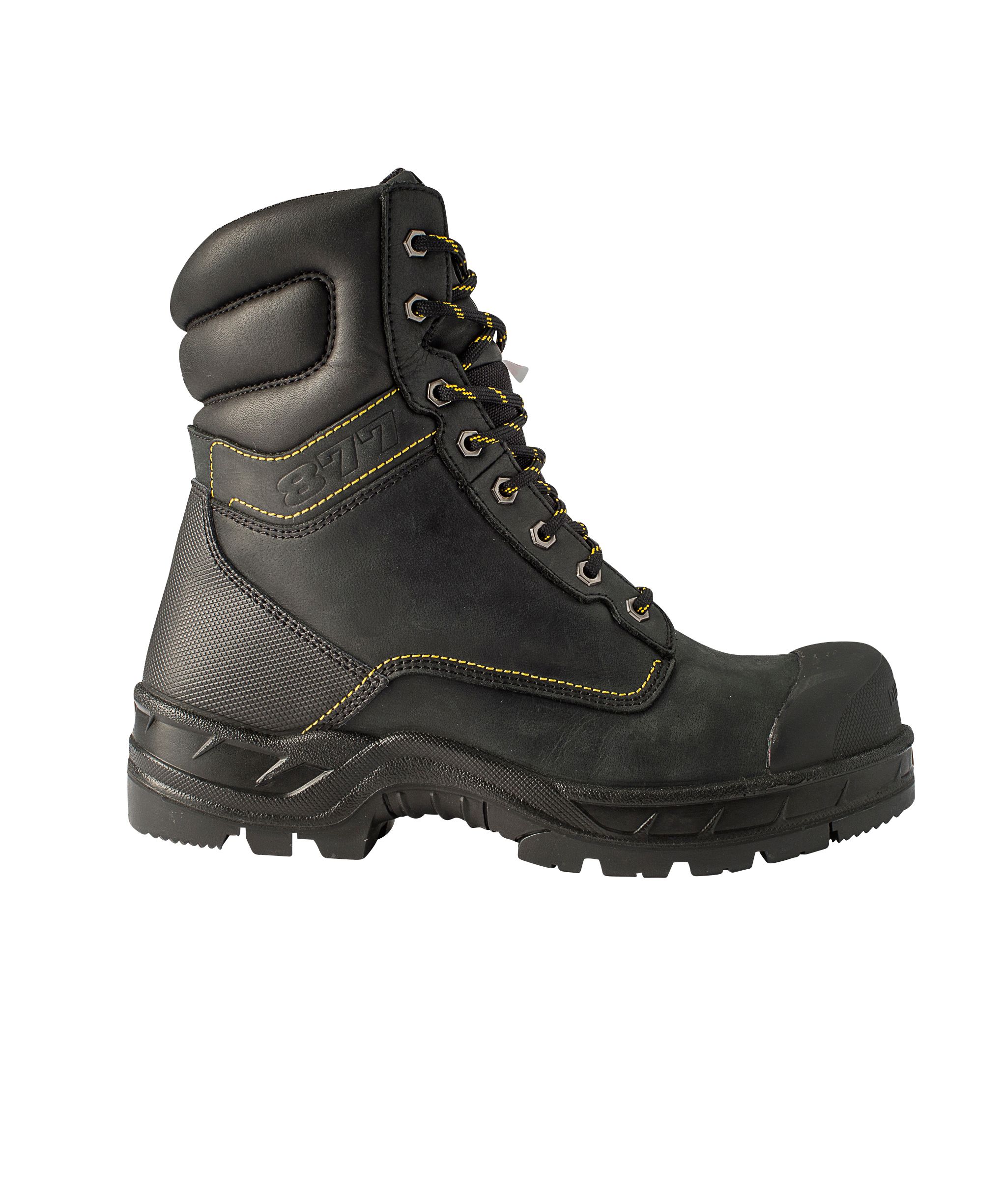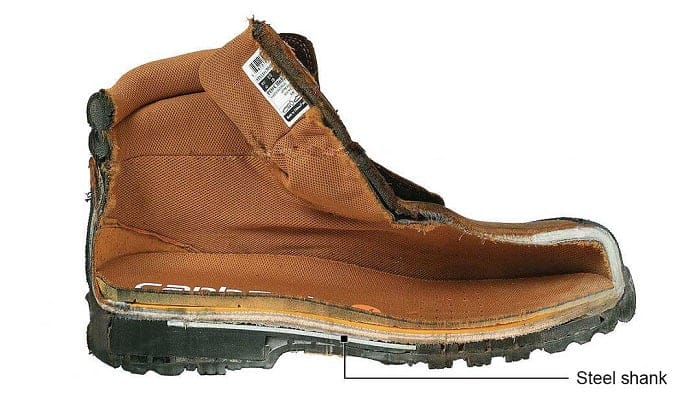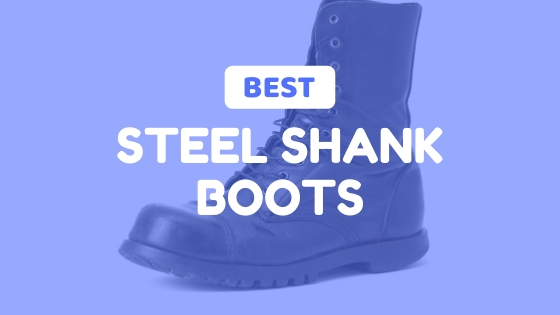Why Steel Toe and Steel Shank Boots are a Must-Have for Workers
In hazardous workplaces, foot injuries can be a major concern. According to the Occupational Safety and Health Administration (OSHA), over 100,000 foot injuries occur annually in the United States alone. These injuries can result in significant pain, discomfort, and even long-term disability. However, wearing steel toe and steel shank boots can significantly reduce the risk of foot injuries. These boots are designed to provide comprehensive protection for the feet, ankles, and legs, making them an essential component of personal protective equipment (PPE) in many industries.
Steel toe and steel shank boots are particularly crucial in workplaces where heavy objects may fall, sharp edges are present, or electrical hazards exist. In these environments, the risk of foot crush injuries, lacerations, and electrical shock is heightened. By wearing steel toe and steel shank boots, workers can protect themselves from these hazards and reduce the likelihood of serious injury. Furthermore, many employers require workers to wear steel toe and steel shank boots as a mandatory safety precaution, making them a must-have for workers in these industries.
How to Choose the Right Steel Toe and Steel Shank Boots for Your Job
Selecting the right steel toe and steel shank boots for your job can be a daunting task, especially with the numerous options available in the market. However, it’s crucial to choose the right boots that meet the specific requirements of your occupation, work environment, and personal comfort. Here are some tips and considerations to help you make an informed decision:
Firstly, consider the job requirements. If you work in a hazardous environment with heavy objects, sharp edges, or electrical hazards, you’ll need boots with a high level of protection. Look for boots with a steel toe cap and a steel shank for added protection. If you work in a wet or slippery environment, consider boots with slip-resistant soles.
Next, think about the work environment. If you work outdoors, you’ll need boots that are waterproof and insulated. If you work in a hot or cold environment, look for boots with breathable materials and thermal insulation. Consider the terrain you’ll be working on, and choose boots with a suitable sole type and tread pattern.
Personal comfort is also an essential factor to consider. Choose boots that fit comfortably, with adequate room for your toes and a comfortable width. Look for boots with cushioning, arch support, and a breathable lining to reduce fatigue and discomfort.
Finally, consider the certifications and standards. Look for boots that meet or exceed industry standards, such as ASTM and CSA. Check the boot’s rating for impact resistance, compression resistance, and electrical hazard protection.
By considering these factors, you can choose the right steel toe and steel shank boots for your job, ensuring your feet are protected and comfortable throughout the workday.
The Difference Between Steel Toe and Steel Shank Boots: What You Need to Know
When it comes to steel toe and steel shank boots, many people assume that they are one and the same. However, these two components serve distinct purposes and work together to provide comprehensive foot protection. Understanding the difference between steel toe and steel shank boots is crucial to selecting the right boots for your job.
A steel toe boot features a protective toe cap made of steel or other materials that meets or exceeds industry standards for impact resistance. The steel toe cap is designed to absorb and distribute the force of an impact, reducing the risk of toe injuries. Steel toe boots are essential for workers in industries where heavy objects may fall or roll onto their feet.
A steel shank boot, on the other hand, features a steel plate or shank that runs along the length of the boot, providing additional support and protection for the arch and ankle. The steel shank helps to prevent ankle twists and sprains, and provides stability and support for the foot. Steel shank boots are ideal for workers who need to navigate uneven terrain or perform tasks that require ankle mobility.
While steel toe boots provide protection for the toes, steel shank boots provide protection for the arch and ankle. Together, they provide comprehensive foot protection and support. When selecting steel toe and steel shank boots, look for boots that feature both components to ensure maximum protection and support.
In summary, steel toe boots are designed to protect the toes from impact, while steel shank boots provide support and protection for the arch and ankle. By understanding the unique features and benefits of each, you can choose the right steel toe and steel shank boots for your job and ensure your feet are protected and supported throughout the workday.
Top-Rated Steel Toe and Steel Shank Boots for Various Industries
When it comes to selecting the right steel toe and steel shank boots for your job, it’s essential to consider the specific demands of your industry. Here, we’ll review and compare top-rated steel toe and steel shank boots for different industries, highlighting their features, pros, and cons.
Construction: For construction workers, the Timberland PRO Boondock Boot is a top choice. This boot features a rugged outsole, breathable mesh lining, and a steel toe cap that meets ASTM standards. The boot’s rugged design and slip-resistant sole make it ideal for construction sites.
Manufacturing: In manufacturing environments, the Dr. Martens Ironbridge Boot is a popular choice. This boot features a steel toe cap, slip-resistant sole, and a breathable air-cushioned sole. The boot’s comfortable design and durable construction make it suitable for workers who spend long hours on their feet.
Warehousing: For warehouse workers, the Thorogood American Made Boot is a top pick. This boot features a steel toe cap, slip-resistant sole, and a comfortable, breathable design. The boot’s durable construction and affordable price make it an excellent value for warehouse workers.
Oil and Gas: In the oil and gas industry, the Justin Original Work Boot is a top choice. This boot features a steel toe cap, slip-resistant sole, and a rugged, waterproof design. The boot’s durable construction and comfortable fit make it suitable for workers in harsh environments.
When selecting steel toe and steel shank boots for your industry, consider the specific hazards and demands of your job. Look for boots that meet or exceed industry standards, and feature durable construction, comfortable designs, and slip-resistant soles. By choosing the right boots for your industry, you can ensure your feet are protected and supported throughout the workday.
What to Look for in a Steel Toe and Steel Shank Boot: Key Features and Certifications
When purchasing steel toe and steel shank boots, it’s essential to look for key features and certifications that ensure the boots meet industry standards for safety and performance. Here, we’ll discuss the essential features and certifications to look for in steel toe and steel shank boots.
ASTM and CSA Standards: Look for boots that meet or exceed ASTM (American Society for Testing and Materials) and CSA (Canadian Standards Association) standards for impact and compression resistance. These standards ensure that the boots can withstand heavy objects and harsh environments.
Slip-Resistance: A slip-resistant sole is crucial for preventing slips, trips, and falls in the workplace. Look for boots with soles that meet or exceed industry standards for slip-resistance, such as the ASTM F2913 standard.
Insulation: Insulation is essential for keeping feet warm and dry in cold and wet environments. Look for boots with insulation that meets or exceeds industry standards for thermal protection, such as the ASTM F2413 standard.
Waterproofing: Waterproofing is essential for preventing water from entering the boot and causing discomfort and safety hazards. Look for boots with waterproof membranes, such as Gore-Tex or eVent, that meet or exceed industry standards for waterproofing.
Comfort and Support: Comfort and support are essential for preventing fatigue and discomfort in the workplace. Look for boots with cushioning, arch support, and breathable materials that promote comfort and support.
Certifications: Look for boots that are certified by reputable organizations, such as the Occupational Safety and Health Administration (OSHA) or the International Safety Equipment Association (ISEA). These certifications ensure that the boots meet industry standards for safety and performance.
By looking for these key features and certifications, you can ensure that your steel toe and steel shank boots meet industry standards for safety and performance, and provide the protection and comfort you need to perform your job safely and effectively.
Breaking In Your Steel Toe and Steel Shank Boots: Tips for Comfort and Durability
Breaking in a new pair of steel toe and steel shank boots can be a daunting task, but with the right techniques, you can ensure a comfortable and durable fit. Here, we’ll provide tips on how to break in your new boots, including conditioning, stretching, and wearing them in.
Conditioning: Before wearing your new boots, apply a leather conditioner or waterproofing spray to the leather upper. This will help soften the leather and make it more pliable, reducing the risk of cracking and increasing the boot’s water resistance.
Stretching: To stretch the boot’s leather upper, use a shoe stretcher or a hair dryer to heat the leather. Then, use a leather conditioner or oil to moisturize the leather and make it more flexible. This will help reduce the risk of blisters and discomfort.
Wearing Them In: To break in your boots, wear them for short periods, gradually increasing the duration over time. Start with short walks or light activities, and gradually move to more strenuous tasks. This will help your feet adjust to the boot’s shape and reduce the risk of discomfort.
Tips for Comfort: To ensure a comfortable fit, wear thick socks or insoles to reduce pressure on your feet. You can also use foot rollers or massagers to reduce fatigue and discomfort. Additionally, consider purchasing boots with cushioning, arch support, and breathable materials to promote comfort and reduce fatigue.
Tips for Durability: To extend the lifespan of your boots, clean them regularly with a soft brush and mild soap. Avoid using harsh chemicals or abrasive materials that can damage the leather or compromise the boot’s waterproofing. Additionally, store your boots in a cool, dry place to prevent moisture buildup and reduce the risk of mold and mildew.
By following these tips, you can ensure a comfortable and durable fit for your steel toe and steel shank boots. Remember to condition, stretch, and wear them in gradually, and take steps to promote comfort and durability. With proper care and maintenance, your boots will provide years of reliable service and protection.
Common Misconceptions About Steel Toe and Steel Shank Boots Debunked
When it comes to steel toe and steel shank boots, there are several common misconceptions that may deter workers from investing in this essential safety gear. In this section, we’ll address these myths and provide facts to set the record straight.
Myth: Steel Toe and Steel Shank Boots are Heavy and Bulky
This myth likely originated from early designs of steel toe and steel shank boots, which were indeed heavier and bulkier than their non-safety counterparts. However, modern designs have significantly reduced the weight and bulk of these boots, making them more comfortable and wearable. Many steel toe and steel shank boots now feature lightweight materials, ergonomic design, and advanced cushioning systems, making them a comfortable choice for workers.
Myth: Steel Toe and Steel Shank Boots are Only for Construction Workers
This myth is far from the truth. While construction workers do benefit from steel toe and steel shank boots, these boots are essential for workers in various industries, including manufacturing, warehousing, and even healthcare. Any worker who faces hazards such as heavy objects, sharp edges, or slippery surfaces can benefit from the protection offered by steel toe and steel shank boots.
Myth: Steel Toe and Steel Shank Boots are Limited in Style Options
This myth is another misconception. Modern steel toe and steel shank boots come in a wide range of styles, from sleek and modern designs to rugged and durable options. Whether you prefer a low-cut boot or a high-top boot, there’s a steel toe and steel shank boot to suit your needs and preferences.
Myth: Steel Toe and Steel Shank Boots are Expensive
While high-quality steel toe and steel shank boots may require an initial investment, they can provide long-term cost savings by reducing the risk of injury and associated medical expenses. Additionally, many employers and insurance companies offer discounts or reimbursements for workers who invest in steel toe and steel shank boots.
By debunking these common misconceptions, workers can make informed decisions about investing in steel toe and steel shank boots. Remember, the benefits of these boots far outweigh any perceived drawbacks, and they are an essential component of a safe and healthy work environment.
Investing in Your Safety: The Long-Term Benefits of Steel Toe and Steel Shank Boots
When it comes to protecting your feet on the job, investing in high-quality steel toe and steel shank boots is a wise decision. While the initial cost may seem significant, the long-term benefits of these boots far outweigh the expense. In this section, we’ll explore the advantages of investing in steel toe and steel shank boots, including reduced risk of injury, increased productivity, and cost savings.
Reduced Risk of Injury
The most significant benefit of steel toe and steel shank boots is the reduced risk of foot injuries. These boots are designed to protect your feet from hazards such as heavy objects, sharp edges, and slippery surfaces. By wearing steel toe and steel shank boots, you can significantly reduce the risk of foot injuries, which can lead to costly medical expenses, lost productivity, and even long-term disability.
Increased Productivity
When you’re confident in the safety of your feet, you can focus on your work without distraction. Steel toe and steel shank boots can increase your productivity by allowing you to work without worrying about foot injuries. This, in turn, can lead to increased job satisfaction, better work quality, and improved overall performance.
Cost Savings
The cost of steel toe and steel shank boots may seem significant, but it’s a small price to pay compared to the cost of foot injuries. According to the Occupational Safety and Health Administration (OSHA), foot injuries can cost employers an average of $1,300 per incident. By investing in steel toe and steel shank boots, you can avoid these costly expenses and reduce your overall workers’ compensation claims.
Long-Term Benefits
The benefits of steel toe and steel shank boots extend beyond the workplace. By protecting your feet, you can reduce the risk of long-term foot problems, such as chronic pain, arthritis, and nerve damage. This can lead to a better quality of life, improved overall health, and increased mobility.
In conclusion, investing in high-quality steel toe and steel shank boots is a wise decision for any worker. By reducing the risk of foot injuries, increasing productivity, and providing cost savings, these boots can provide long-term benefits that extend far beyond the workplace.







